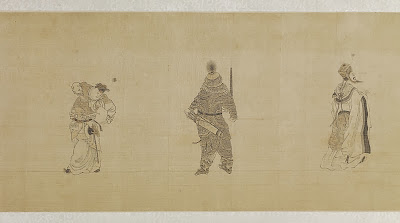In the European Review of History, an abstract on the 'meat war' of Germany in 1912, a food riot that occurred shortly before WWI.
*
An article from Penn History Review on British missionary activities in colonial East Africa.
*
An abstract from the AIMA Bulletin on the identification of the grave of a Japanese WWII Mitsubishi A6M2 Model 21 naval pilot and fighter ace Osamu Kudo in Australia.
Imperial Japanese Navy fighter ace Osamu Kudō, credited with destroying 7 enemy
aircraft. This photo was taken in 1938 or 1939 while Kudō was serving on
the aircraft carrier Kaga.
An A6M2 Model 21 Zero launches from the carrier Shokaku on October 26, 1942
during the Battle of the Santa Cruz Islands while deck crewmen cheer on
the pilot, Lieutenant Hideki Shingo, Zero group leader.
*
An abstract on a recent search for sunken buried and buried prison hulks in Melbourne, Australia
*
An abstract on Australian cooperation with other countries on managing sunken wrecks specifically US naval vessels USS Lexington, USS Sims and USS Neosho.
USS Lexington (CV-2), burning and sinking after her crew abandoned ship during the Battle of Coral Sea, 8 May 1942
USS Sims (DD-409) off the Kennebec River, Maine, during her builder's trials, 6 July
1939. She is flying the flag of Bath Iron Works, her builder, at the
foremast peak. The Mark 37 main gun battery director has not
yet been installed.
USS Neosho,
navy oil tanker, cautiously backs away from her berth (right center) in a
successful effort to escape the Japanese attack on Pearl Harbor, Dec.
7, 1941. At left the battleship USS California lists after aerial
blows. Other crippled warships and part of the hull of the capsized
USS Oklahoma may be seen in the background. The Neosho was later sunk
in the Coral Sea.
*
An abstract on the detailed report covering the 2008 discovery of one of the USN Patrol Wing-10 Catalina flying
boats sunk during the first Japanese air raid in Darwin, Northern
Territory, on 19 February 1942.
The explosion of an oil storage tank and clouds of smoke from other
tanks, hit during the first Japanese air raid on Australia's mainland,
at Darwin on February 19, 1942. In the foreground is HMAS Deloraine,
which escaped damage.













































